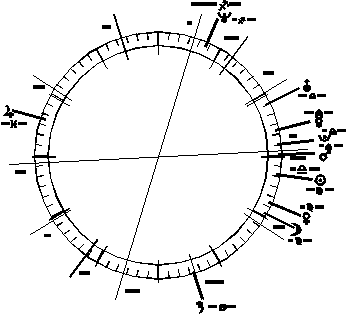Minute of arc#Symbols and abbreviations
An arc second or arcsecond is a unit of measurement of the angle and means the 3600th of a degree. It corresponds nearly to the angle at which appears a 5 mm wide object from a distance of 1 km. As a symbol, the second character "or arcsec are used not common, however, is AS.
60 angular seconds is a minute of arc, 60 arc minutes corresponds to a degree. In astronomy and geodesy, the arcsecond is common with further subdivisions that follow the decimal system: A milliarcsecond ( mas ) is a thousandth of a second of arc (classical notation = .001 " ), a micro- arcsecond ( μas ) a millionth of a second of arc.
Earlier, a further subdivision of the second in 60 Tertien was common; for some procedures in the navigation, this classification is still in use today.
The second angle is not part of the International System of Units ( SI), but is approved for use with the SI. This is a legal unit.
Conversion
The conversion to radians is done accordingly, see Conversion between radians and degrees.
Icon
The symbol for angular seconds is arcsec or the second character. The latter consists of two straight lines inclined: 1 " = 1 arc second, which corresponds to the inch mark. Alternatively, two vertical bars ( " ) are used.
Examples
- 60 angular seconds (one minute of angle ) is approximately equal to the angle at which appears a 1 meter wide object from a distance of 3438 m.
- 20 arc seconds correspond approximately to the angle at which appears a 1 cm wide object from a distance of 100 m.
- A second angle is approximately equal to the angle at which a 1-euro coin from a distance of 4800 m appears.
- A second angle of the Earth's circumference at the equator is approximately 30.9 m; 60 times it ( the minute of arc ) is a nautical mile. On the north latitude of Germany was one arcsecond corresponds to a length of about 21.1 m ( Oberstdorf, about 47 degrees) to about 17.1 m (for the island of Sylt, about 55 degrees). In the geographical center of Germany, it corresponds to about 19.5 m ( Dorla, about 51 degrees).
- In arcseconds most reduction sizes of measuring instruments in astronomy and geodesy is given, eg the Kippachsneigung ( with large hanging dragonflies are about 0.1 " measurable). Also micrometers and small angle differences (eg parallax of stars ) can be specified in this measure.
- A milliarcsecond ( one thousandth of an arc second ) is approximately equal to the angle at which we perceive a distance of 1.9 m on the lunar surface. Seen from the Earth's center, it corresponds to only 3 cm on the Earth's surface.
- At an angle of about 0.03 " appear are the star Beteigeuze and Mira as the only two stars ( excluding the sun ), which are represented by a scope not only as a light spot.
- A micro- arc-second (one millionth of an arcsecond ) is approximately equal to the angle at which a lying on the surface of Mars medicine ball would appear from Earth at a medium distance opposition.
- A right triangle with an angle of 1 " and an opposite side of length 1 AU has an adjacent side of length 1 parsec
Reference to the eye of man
The human eye has a resolution of about 1 arc minute (equivalent to 60 "). So it can theoretically two bars with this angular distance away from each other yet. De facto reduces the shape of the objects or weak contrast this value. The closest binary star ( ε in the constellation Lyra ), the very sharp eye can still perceive separately, has 208 " angular distance. On the other hand, our eyes have the ability to detect much finer detail even if they are linear and stimulate several photoreceptor cells. So one can make a ship's mast still on the horizon when its visible width extends over 20 ".








